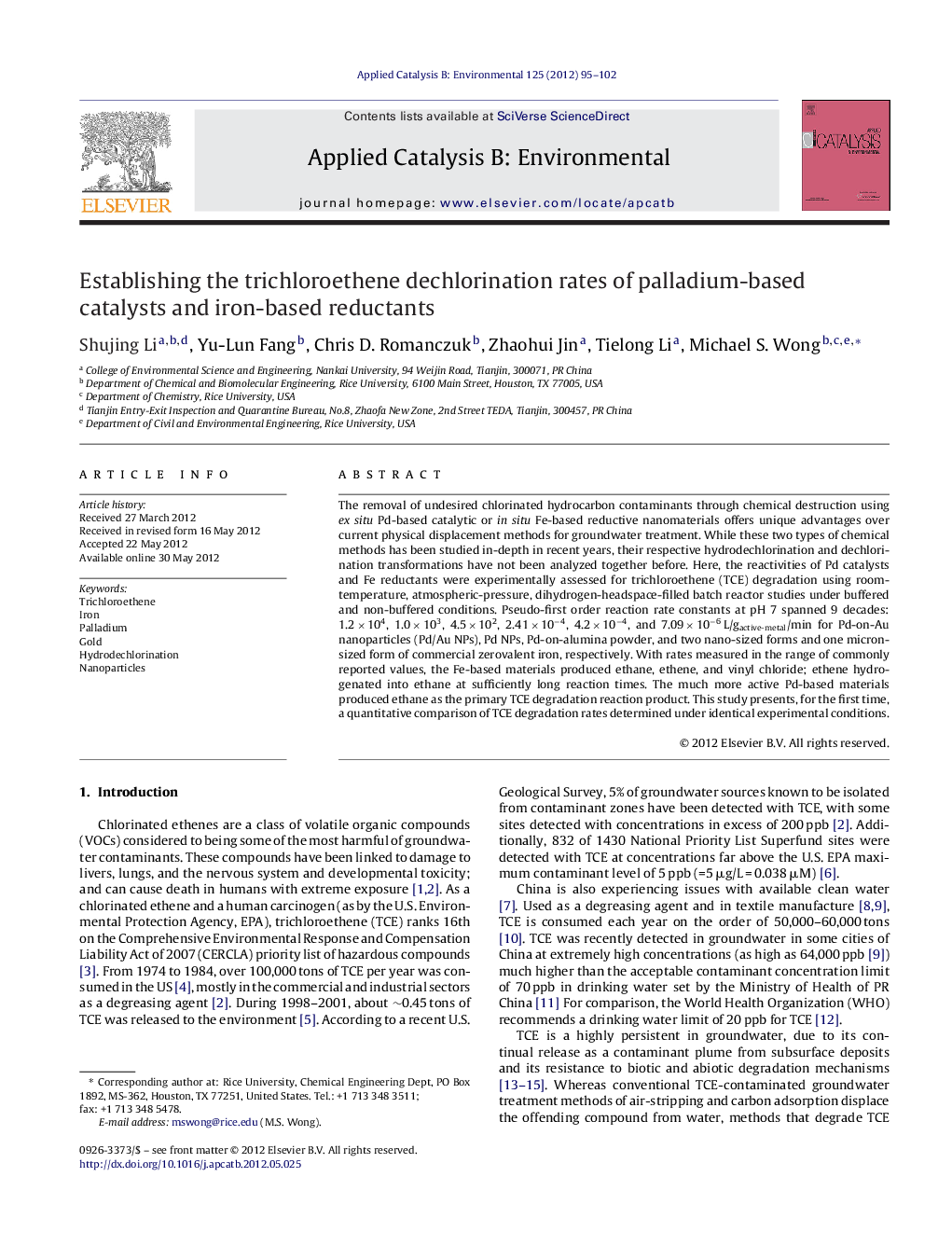| Article ID | Journal | Published Year | Pages | File Type |
|---|---|---|---|---|
| 46059 | Applied Catalysis B: Environmental | 2012 | 8 Pages |
The removal of undesired chlorinated hydrocarbon contaminants through chemical destruction using ex situ Pd-based catalytic or in situ Fe-based reductive nanomaterials offers unique advantages over current physical displacement methods for groundwater treatment. While these two types of chemical methods has been studied in-depth in recent years, their respective hydrodechlorination and dechlorination transformations have not been analyzed together before. Here, the reactivities of Pd catalysts and Fe reductants were experimentally assessed for trichloroethene (TCE) degradation using room-temperature, atmospheric-pressure, dihydrogen-headspace-filled batch reactor studies under buffered and non-buffered conditions. Pseudo-first order reaction rate constants at pH 7 spanned 9 decades: 1.2 × 104, 1.0 × 103, 4.5 × 102, 2.41 × 10−4, 4.2 × 10−4, and 7.09 × 10−6 L/gactive-metal/min for Pd-on-Au nanoparticles (Pd/Au NPs), Pd NPs, Pd-on-alumina powder, and two nano-sized forms and one micron-sized form of commercial zerovalent iron, respectively. With rates measured in the range of commonly reported values, the Fe-based materials produced ethane, ethene, and vinyl chloride; ethene hydrogenated into ethane at sufficiently long reaction times. The much more active Pd-based materials produced ethane as the primary TCE degradation reaction product. This study presents, for the first time, a quantitative comparison of TCE degradation rates determined under identical experimental conditions.
Graphical abstract.Figure optionsDownload full-size imageDownload as PowerPoint slideHighlights► Trichloroethene degradation rates were quantified for Pd- and Fe-based materials. ► Room-temperature, atmospheric-pressure, buffered, H2-filled conditions were used. ► Pd-on-Au nanoparticles were 9 orders more active than commercial zerovalent iron. ► Unlike iron reductants, Pd-based catalysts did not form dechlorinated byproducts. ► These materials were tested under same reaction conditions for the first time.
